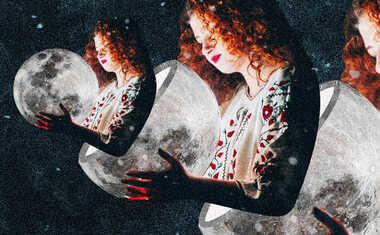
Iconology of the Early Tarot Conclusion
From the Iconology Section of the Robert O'Neill Library
Our analysis of the early Tarot images confirms the documentary evidence that the Tarot originated in 15th century Italy. An excellent summary of the documentary evidence can be found at Collected Fragments of Tarot History.
To the best of my knowledge, after ~20 years of searching, there is no other time or place that can lay claim to having examples of 100% of the Tarot symbols. Individual images or subsets of the symbolic system can be found in other places, but the totality of the symbolic system is only found in 15th century Italy.
In many respects, the search for the "original" ordering of the Tarot trumps is a unicorn hunt. The details of the ordering changed in different decks and the overall pattern differed in different city-states. So the adoption of Dummett's (1980) Type B in this series of essays remains speculative. Nevertheless, this is the ordering which appears to most consistent with the sources and the 15th century significance of the symbols.
Our analysis supports the proposition that the Tarot is not drawn from any single tradition. The best examples of the first 6 cards appear in the Dance of Death tradition. The second half of the symbols appear to be drawn primarily from the Apocalyptic tradition. About a half dozen of the symbols also appear in the Triumphal tradition. Most of the symbol can also be found in the religious and humanist/astrological traditions. As typical of the syncretism of the age, symbols from a variety of sources were synthesized into the Tarot system.
The need to draw examples from many different artistic traditions might seem to detract from the idea that the Tarot is a coherent symbolic system. But, in truth, these traditions were often interwoven in the symbolism of the times. Thus, the Dance of Death played a part in religious plays and processions and, therefore, overlaps the Triumphal tradition which also influenced such processions. More information on the role of the Dance of Death in processions can be found at New Advent.
The dance of death and apocalyptic themes also have interesting historical links. Hind (1935) reviews the early development of woodblock books in the fifteenth century. These were early books, prior to the use of moveable type in which both illustrations and text were printed from wooden blocks. These books were produced by the same carvers and printers that produce the early decks of playing cards. The two most important types were the Apocalypses and the Ars Moriendi, a derivative of the Dance of Death. So the two sets of imagery were produced by the same artists and carvers.
Hind (1935) also discusses a project of book illustrations that was never actually executed. "Archetypus Triumphantis Romae" (~1495). The book was to contain a number of allegorical illustrations, images from the Tarocchi de Mantegna, and illustrations of the Triumphs of Petrarch. So combining imagery across these traditions was not unusual in the 15th century.
Combining symbolic imagery has a long history. Kinney (1992) points out that apocalyptic images such as the four living creatures and angels with trumpets became part of public art with the Christianization of Rome and were common from the 4th century onward. The Empress Galla Placidia had a particular devotion to John the author of the Apocalypse and sponsored the triumphal arch of S. Paolo fuori-le-mura in Rome which contains the living creatures. Although this specific association may not have been known to the Tarot designers, the mixing of themes from the Triumphal and the Apocalyptic traditions may have seemed a natural one with a long history.
The linkage between the Triumphal and Apocalyptic traditions can also be found in the Divine Comedy (Purgatorio canto 29f). Dante describes a triumphal procession with imagery drawn from the Apocalypse (see separate article on Dante and the Tarot). Dante's apocalyptic triumphal procession is believed to have inspired Petrarch (Emmerson 2000).
An attempt has been made to draw out the implications that might have occurred to a card-player in the 15th century. It is interesting that some interpretations seem to support the meanings assigned by later occultists interpretors. But it is also interesting that other meanings do not match the later concepts. The effort here does not argue for or against any specific overall interpretation. The effort here was to show that there were readily available material that the card-player could have used to draw allegorical and religious meanings. Given that multiple levels of meaning were accepted in 15th century syncretism, a broad range of possibilities remain open for future speculation.



